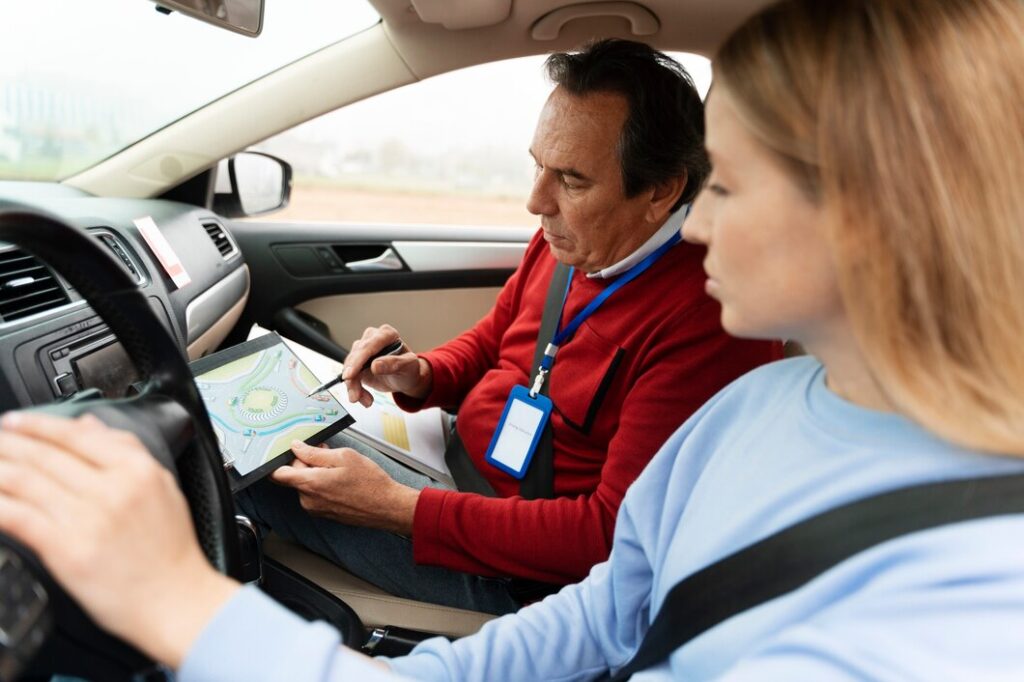There is 5 Steps to Mastering the Art of Drive by this Comprehensive Guide for Beginners
Driving a car is not just a skill; it’s an art. From the first moment you put your hands on the steering wheel to cruising down the highway with confidence, every step involves a blend of knowledge, practice, and awareness. Whether you’re a complete novice or someone looking to brush up on their skills, mastering the art of driving requires patience, dedication, and a willingness to learn.
In this comprehensive guide, we’ll delve into the fundamentals of driving, covering everything from getting started to mastering advanced techniques.
Section 1: Preparing for the Drive

Before you hit the road, it’s essential to make sure you’re prepared both mentally and physically.
1.1 Familiarize Yourself with the Vehicle:
- Take the time to familiarize yourself with the car’s controls, including the steering wheel, pedals, gears, and mirrors.
- Adjust your seat and mirrors to ensure comfort and optimal visibility.
1.2 Understand Basic Traffic Rules:
- Familiarize yourself with basic traffic signs, signals, and road markings.
- Understand the rules of the road, including right of way, speed limits, and signaling.
1.3 Check Your Surroundings:
- Conduct a pre-drive inspection to ensure the vehicle is in proper working condition.
- Check mirrors, blind spots, and surroundings before starting the engine.
Section 2: Getting Started

Now that you’re prepared, it’s time to get behind the wheel and start driving.
2.1 Starting the Engine:
- Turn the ignition key or press the start button, depending on the vehicle.
- Engage the parking brake and release it once the engine is running.
2.2 Understanding Gears:
- Familiarize yourself with the gear shift and understand the different gears (P, R, N, D, L).
- Practice shifting gears in a safe, open space before hitting the road.
2.3 Accelerating and Braking:
- Gently press the accelerator to increase speed and release it to slow down.
- Use the brake pedal gradually and smoothly to come to a stop.
Section 3: Basic Driving Techniques

With the basics covered, it’s time to focus on fundamental driving techniques.
3.1 Steering:
- Hold the steering wheel with both hands in the 9 o’clock and 3 o’clock positions.
- Use smooth, controlled movements to steer the vehicle.
3.2 Lane Positioning:
- Stay within your lane and avoid drifting into adjacent lanes.
- Maintain a safe distance from other vehicles, especially when changing lanes.
3.3 Turning and Signaling:
- Use your turn signals to indicate your intention to turn or change lanes.
- Slow down before making a turn and check for pedestrians and oncoming traffic.
Section 4: Navigating Different Road Conditions

Driving isn’t just about cruising on the open road; it’s also about navigating various road conditions safely.
4.1 Driving in Traffic:
- Maintain a safe following distance to allow for sudden stops.
- Be patient and courteous to other drivers, especially in congested areas.
4.2 Driving in Inclement Weather:
- Reduce your speed and increase following distance in rainy or snowy conditions.
- Use headlights and windshield wipers as needed for visibility.
4.3 Driving at Night:
- Use headlights and high beams responsibly, avoiding blinding other drivers.
- Stay alert and watch out for pedestrians and wildlife, which may be harder to see in the dark.
Section 5: Advanced Driving Techniques

Once you’ve mastered the basics, you can focus on honing your skills with advanced techniques.
5.1 Defensive Driving:
- Anticipate potential hazards and be prepared to react quickly.
- Scan the road ahead and check mirrors frequently to stay aware of your surroundings.
5.2 Parallel Parking:
- Practice parallel parking in a quiet street or parking lot until you feel confident.
- Use reference points and mirrors to gauge distance and alignment.
5.3 Emergency Maneuvers:
- Practice emergency braking and evasive maneuvers in a safe, controlled environment.
- Know how to respond to skids or loss of control without panicking.
Things You Should Know
Driving a car is a privilege that comes with great responsibility. By mastering the art of driving, you not only ensure your safety but also the safety of those around you.
Remember, becoming a skilled driver takes time and practice, so don’t be discouraged by setbacks. With patience, dedication, and a willingness to learn, you’ll soon navigate the roads with confidence and ease. So, buckle up, stay focused, and enjoy the journey ahead.

